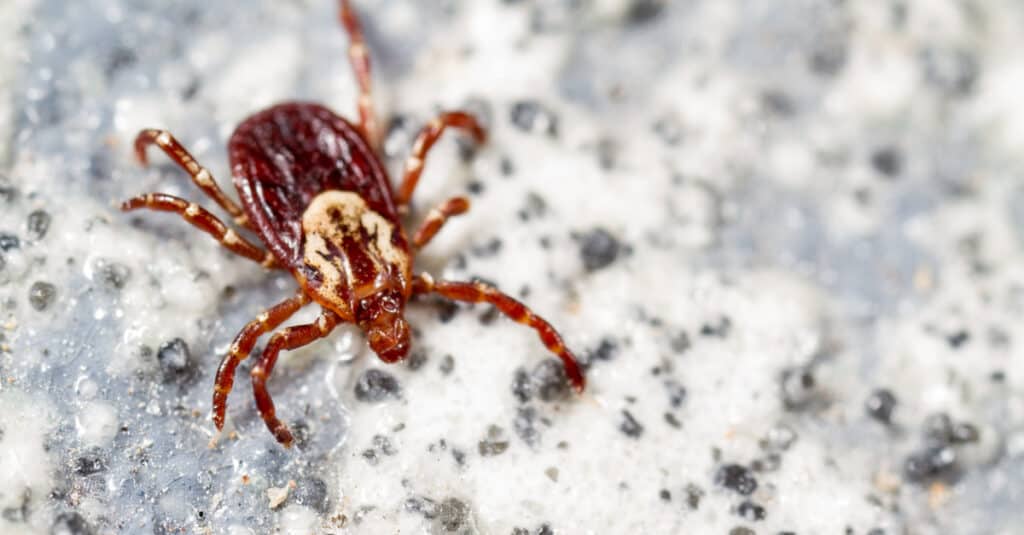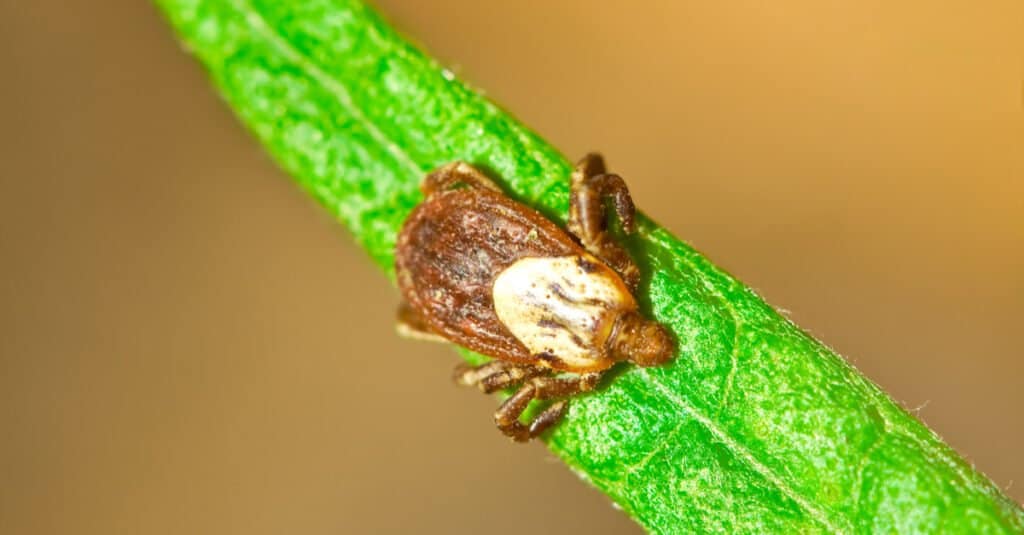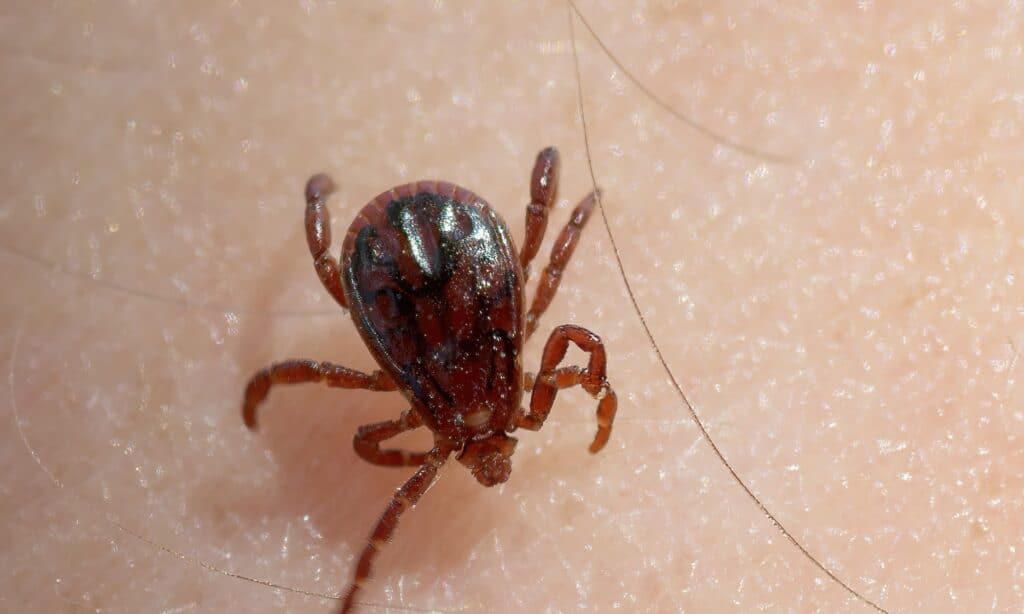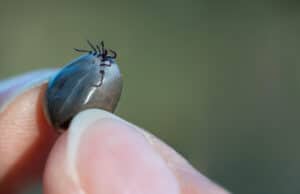There are around 900 species of tick living all over the planet. Of these, around 700 are of the Ixodidae family and have hard bodies, while around 200 species have soft bodies and are grouped in the Argasidae family. When it comes to ticks in Montana, there are only three common species, all of which belong to the Ixodidae family.
Ticks have been around for a very long time, around 100 million years to be exact. They’re commonly mistaken for insects, but, in fact, they’re actually arachnids, like spiders, mites, and scorpions. Ticks are unique because they’re obligate hematophages, which means that they need only blood to survive.
Each tick species is different, but they all share a few common features. The first of these is their life cycle. All ticks start as eggs. Upon hatching, the larvae find a tiny host, like a mouse, lizard, or rat, to feed on. After feeding, they molt, becoming six-legged nymphs. The nymphs feed once again, this time on medium-sized creatures like rabbits, raccoons, cats, or dogs, before molting into adults. As adults, all ticks have eight legs and the ability to feed on humans.
Here, we’ll discover the three common types of ticks in Montana. We’ll learn how to tell each species apart, where they live, and what their favorite hosts are. Then, we’ll go over whether or not any of the ticks in Montana carry Lyme disease and what you can do to avoid their pathogen-laden bites. Finally, we’ll go over the steps you should take in case of a tick bite.
American Dog Tick

The American dog tick is one of the most common ticks.
©Elliotte Rusty Harold/Shutterstock.com
Though they’re often called wood ticks, the American dog ticks actually prefer open fields to forests. These ticks live strictly in eastern Montana, where flat fields of grass and shrub are king. They’re most likely to be found hanging out on the tips of long grass or the outermost edges of bushes or shrubs. American dog ticks in Montana prey primarily on deer and other medium-sized animals, like dogs and humans.
The American dog tick is easy to recognize. They’re bigger than other ticks, about the size of the head of a match. Both males and females have mahogany brown bodies and brown legs with large, easily visible mouthparts. Female American dog ticks in Montana have mottled tan scuta—the hard shields that protect their backs. Males have brown legs with tan mottling on their rounded, oval-shaped bodies.
American dog ticks are the primary vectors for Rocky Mountain spotted fever, which they transmit to humans when they feed on them.
Rocky Mountain Wood Tick

The Rocky Mountain wood tick is almost identical in appearance to the American dog tick.
©South12th Photography/Shutterstock.com
As their name suggests, Rocky Mountain wood ticks prefer the mountainous zones of western Montana. They’re one of the most common ticks in Montana, though they live in different parts of the state than the American dog tick. Rocky Mountain wood ticks are dark brown, with red-brown legs and small mouthparts. Like American dog ticks, females have mottled scuta, while males have mottling across their bodies.
These ticks in Montana are much smaller than American dog ticks, though they take many of the same hosts. Rocky Mountain wood ticks feed on raccoons, white-tail deer, humans, dogs, and other animals. While these ticks can carry Rocky Mountain spotted fever, they’re better known for transmitting Colorado tick fever. They live throughout the Rocky Mountains, usually at elevations above 4,000 feet, as well as the Pacific northwest.
Brown Dog Tick

Brown dog ticks are unique because they live their entire lives indoors.
©iStock.com/RobertAx
The brown dog tick is one of the least well-known ticks in Montana. Why? Because although you might think of ticks as an outdoor menace, the brown dog tick resides indoors. Luckily for humans, they rarely bite us, opting instead for our canine companions.
Brown dog ticks in Montana prefer homes with dogs or any other indoor area where they might find a canine host. Unlike American dog ticks, the brown dog tick is small and almost rectangular. Both males and females are red-brown, with no mottling or tan markings like the Rocky Mountain wood tick or the American dog tick. These ticks can transmit Rocky Mountain spotted fever.
When is Tick Season in Montana?
Tick season in Montana ranges from early spring to late summer, with spring and fall being the worst times of year for ticks. In the winter, most ticks go into hibernation. The exception to this is the brown dog tick, which may remain active at all times of the year.
Do Ticks in Montana have Lyme Disease?
Fortunately for Montana residents, there are no ticks in Montana known to transmit Lyme disease. In the United States, only the deer tick (also known as the black-legged tick) carries this insidious illness. Since deer ticks do not live in Montana, Lyme disease is not generally something to worry about with ticks in Montana.
How to Avoid Ticks in Montana
To avoid ticks in Montana, always wear long pants and long-sleeved shirts when embarking on outdoor adventures. The cloth barrier prevents ticks from embedding themselves in your skin. If you plan on taking a dog outdoors with you, be sure to use flea and tick preventative medicine to reduce their chances of a tick bite.
What to do if a Tick Bites You
If you find a tick embedded in you, your loved one, or your dog, it’s important to remove it as soon as possible. Removing a tick is simple; simply grasp the head firmly but gently with tweezers and pull it out. Disinfect the area and monitor for signs of infection.
The photo featured at the top of this post is © iStock.com/Goldfinch4ever
Thank you for reading! Have some feedback for us? Contact the AZ Animals editorial team.






